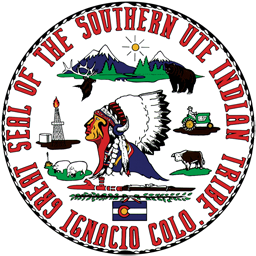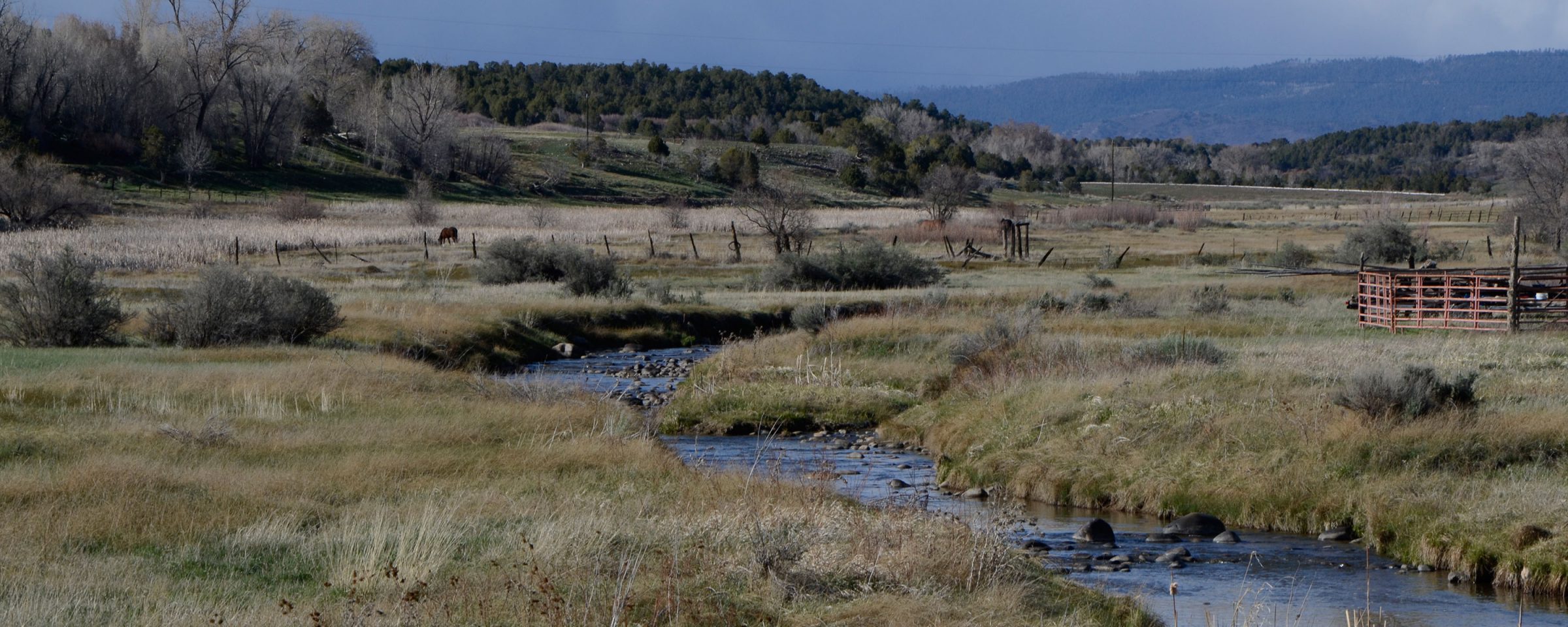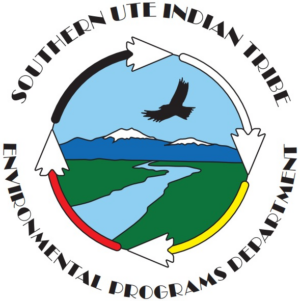Mission
The Southern Ute Indian Tribe’s Air Quality Division is dedicated to ensuring that the air on the Southern Ute Indian Reservation remains clean and safe for Tribal Members and residents, now and into the future. This is being done through monitoring of air quality, permitting and compliance monitoring of large pollution sources, emissions inventories, and continued research of air pollution and its sources.
The wind that gave our grandfather his first breath also receives his last sigh and the wind must also give our children the spirit of life
– Chief Seattle, Duwamish
Programs
Ambient Monitoring
The Air Quality Division maintains three State and Local Air Monitoring Stations (SLAMS) to monitor air quality on the Reservation. The air monitoring station Ute 1 is located just north of Ignacio, Colorado while the second station, Ute 3, is located off of Colorado State Highway 550 north of Bondad, Colorado. The third station, a mobile monitoring station, is located at Lake Capote on the east side of the Reservation. All stations adhere to Environmental Protection Agency (EPA) SLAMS quality assurance guidelines and data is reported to the EPA Air Quality System for National Ambient Air Quality Standard comparison and EPA’s AirNow website.
For more information about the Ambient Monitoring Program and to view ambient air quality forecasts for the Southern Ute Indian Reservation, visit our Ambient Monitoring web page.
Title V Operating Permit Program
On March 2, 2012, the United States Environmental Protection Agency approved the Tribe’s Title V Program application, granting the Tribe full authority to implement and administer its 40 CFR Part 70 Operating Permit Program for Title V sources within the exterior boundaries of the Reservation.
For more information about the Title V Operating Permit program, to view permits issued by the Southern Ute Air Quality Division, or obtain Title V application and compliance forms, please visit the Title V Operating Permit Program web page.
Environmental Commission
The Mission of the Environmental Commission is to oversee the development and implementation of a comprehensive and effective program for the protection of air quality throughout the Southern Ute Indian Reservation.
For more information about the Environmental Commission visit the Environmental Commission web page.
Reservation Air Code
The Reservation Air Code (RAC) was approved by the Southern Ute Indian Tribe/State of Colorado Environmental Commission (Commission) on November 12, 2008, and became effective on the March 2, 2012 approval date of the Southern Ute Indian Tribe’s Part 70 operating permit program.
On November 14, 2012, the Commission approved RAC Article II, Part 2 and Part 3 to incorporate certain New Source Performance Standards and National Emission Standards for Hazardous Air Pollutants. On July 8, 2013, the EPA approved delegation to the Southern Ute Tribe to implement and enforce New Source Performance Standards and National Emission Standards for Hazardous Air Pollutants as a direct final rule. This rule became effective on September 6, 2013.
Documents
Emissions Inventory
The Southern Ute Indian Tribe Air Quality Division prepares emissions inventories for air emission sources within the Reservation boundaries. Comprehensive inventories of emissions from all quantifiable point, nonpoint sources, mobile, and fire events are completed every three years and inventories of large point source emissions are completed annually.
For more information about the emissions inventories and to view comprehensive and annual emissions inventory reports prepared by the Southern Ute Air Quality Program, please visit the Emissions Inventory web page.
Climate Pollution Reduction Grant
- The Southern Ute Air Quality Division (AQD) received a planning grant under the 2022 Inflation Reduction Act, Climate Pollution Reduction Grant (CPRG). The AQD is in the beginning phases of developing long-term planning strategies to aid in the global challenge of mitigating human caused climate change and for maintaining healthy air quality on the Reservation. The first plan being developed is called the Priority Climate Action Plan, and will include the AQD’s “shovel ready” priority measures for reducing greenhouse gas emissions on the Reservation.
- If the AQD is successful in obtaining funding under the second phase of competitive CPRG funding in 2024, the AQD will implement measures outlined in the Priority Climate Action Plan, to the extent the measures are funded, and over the course of the next several years, develop a long term GHG reduction strategy for the Reservation, called a Comprehensive Climate Action Plan.
- For more information about the Climate Pollution Reduction Grant, please visit the Climate Pollution Reduction Grant web page.


